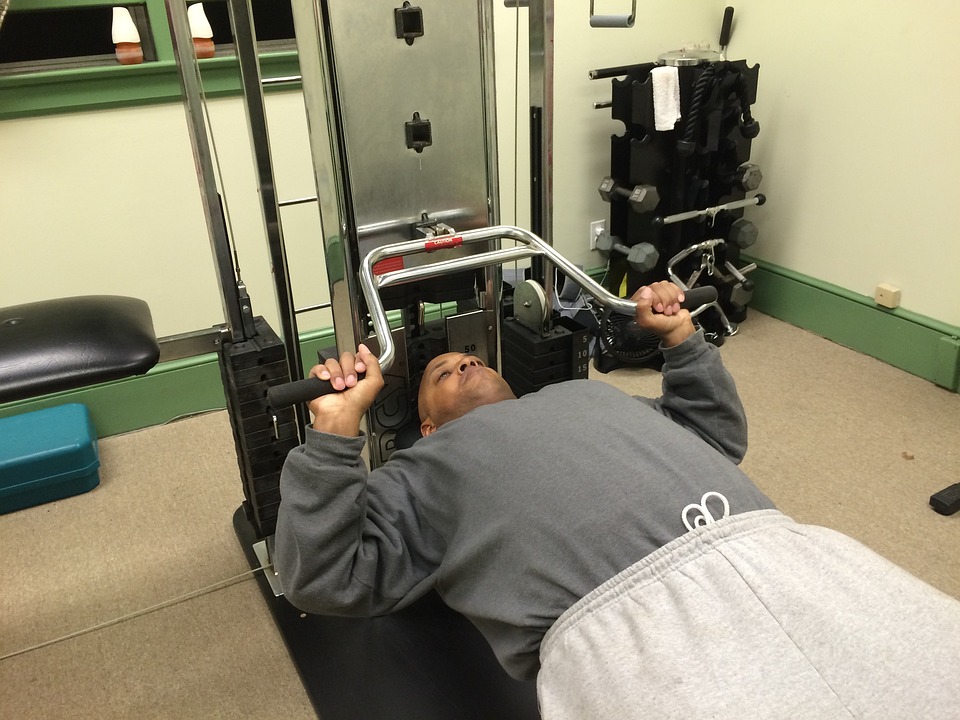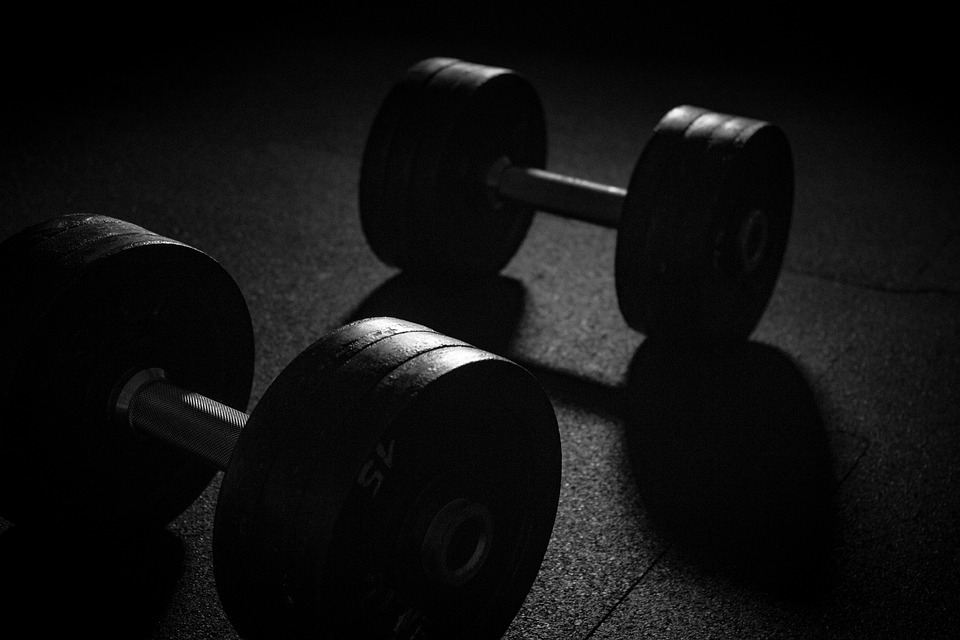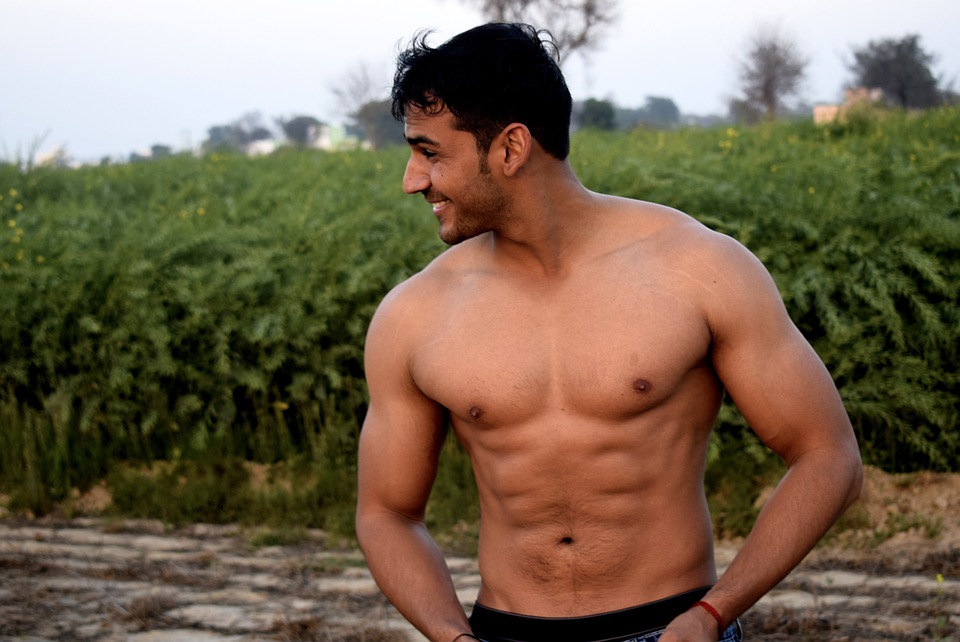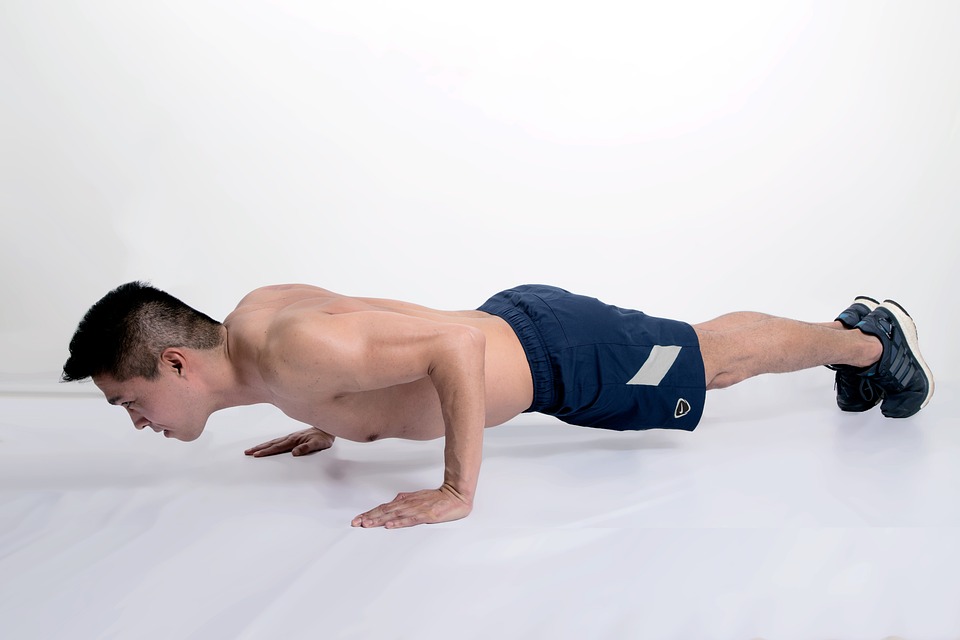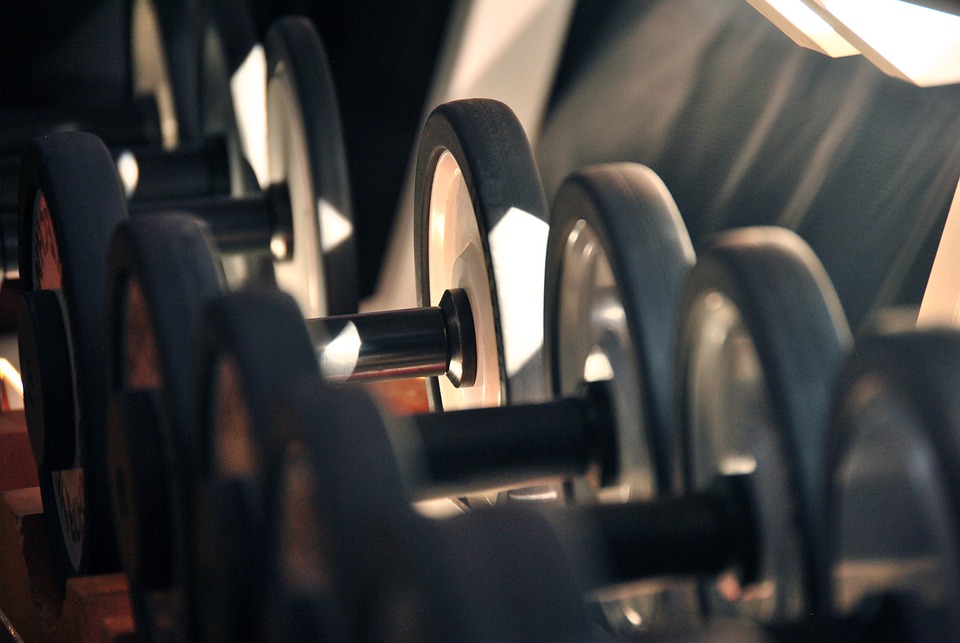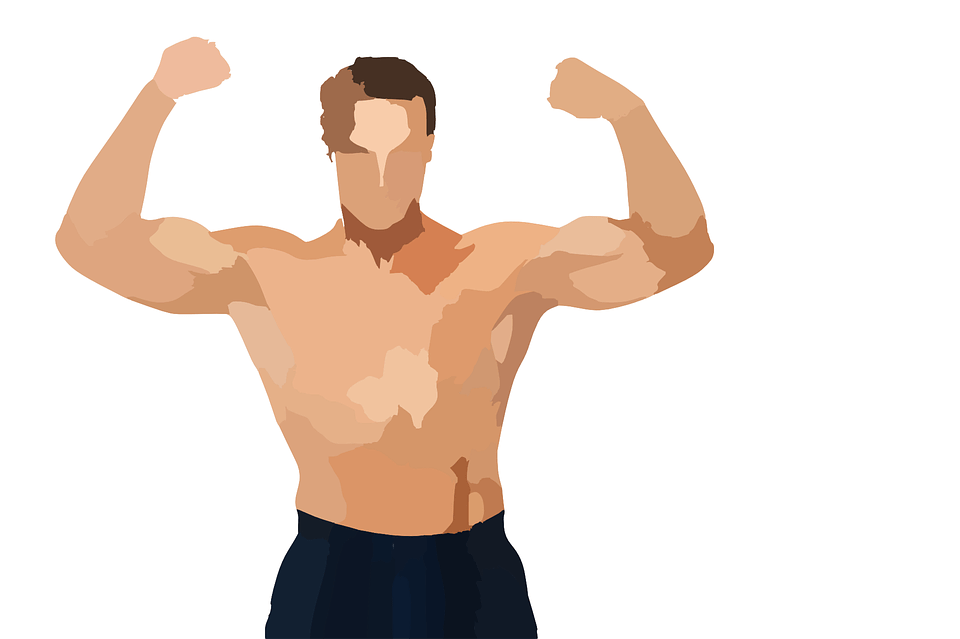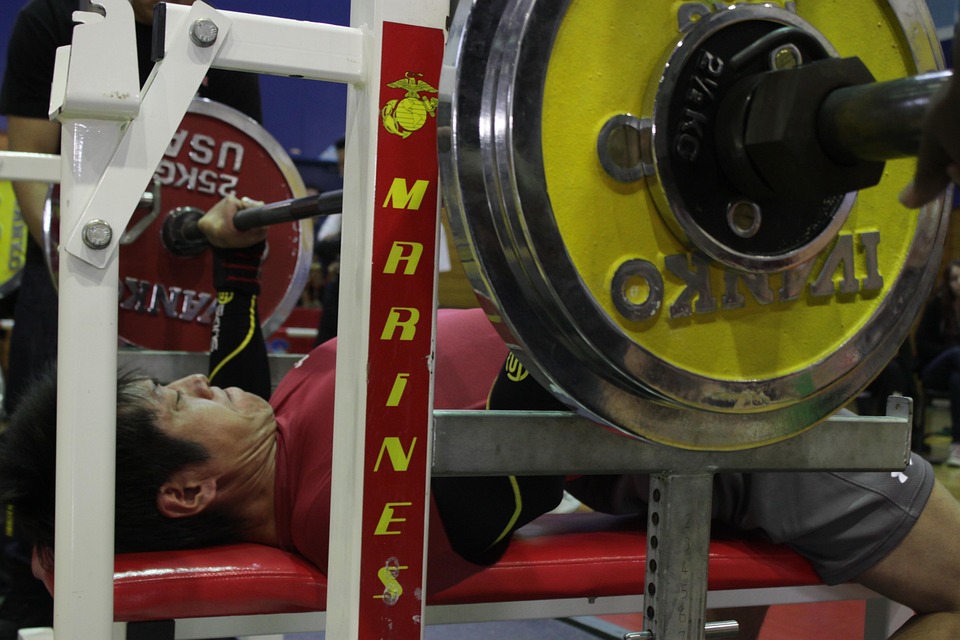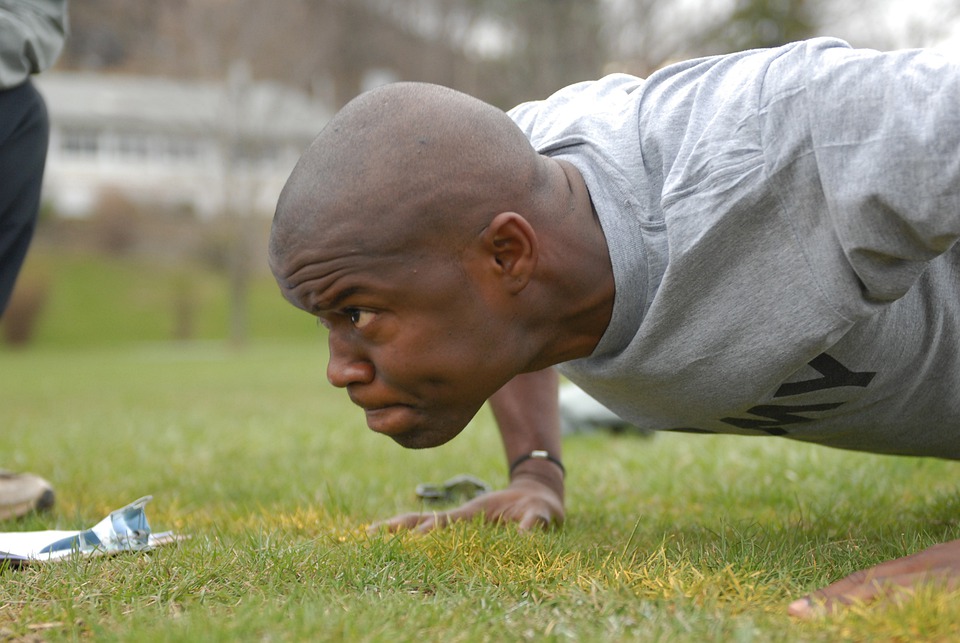
1. If you’re looking to grow your chest muscles, here are 15 of the best exercises to add to your workout routine. 2. Combined with a growth-focused diet and supplement plan, these exercises can help you achieve the chest size you’re looking for.
Barbell Bench Press
The bench press is a popular lift in the gym for a reason. The standard barbell bench allows you to move the most weight. It is also an easier lift to control than pressing with heavy dumbbells.
If you’re looking to add muscle and strength, the bench press responds well to classic 5×5 protocols. If you’re looking to add pure mass, try 10×10 German Volume Training. If you’re looking to get serious, there are systematic bench press programs like Bench 300 to help you chase a big number.
Do bench press early on in your workout when you’re doing heavier sets with fewer repetitions. When you’re doing exercises with a lot of repetitions for a chest burnout, there are better moves. Change up your grip width and style to develop your chest more completely.
Dumbbell Bench Press
Some weightlifters debate whether dumbbell or barbell presses are better for growth. However, you can do both for a well-rounded workout. Most would agree that dumbbell presses have more versatility and are better for beginners, intermediates, and experts alike.
Dumbbells offer some big advantages over other types of weights: each side of your body has to work independently, resulting in more balanced strength and size. Dumbbells also allow a greater range of motion, which some studies suggest can lead to increased muscle growth. Additionally, you can more easily change your grip to create variety and a new challenge on chest day.
Heavy dumbbell presses at the beginning of your chest workout will help you in lower rep ranges. They can also be effective when done later in the workout with higher reps, either flat or on an incline or decline.
Incline Bench Press
The incline bench press is not only a great way to build your upper chest, but many lifters find it to be a more comfortable “main lift” for the shoulders than flat benching. This exercise can be done with a barbell or multi-grip bar, but it may be even better with dumbbells. This is because you can customize your grip to increase focus on the upper pecs.
If you want to focus on your upper pecs, it’s best to choose a bench with a lower incline, such as 30 degrees.
The study also suggests that bringing your grip closer will help to target the upper chest muscles more.
As your primary lift, do a few heavy sets of 6-8 repetitions. As your secondary lift, do 8-10 repetitions. Many chest workouts start with flat-bench movements first, but every so often start with inclines, particularly if you’re trying to bring up your upper chest.
Suspended Pushup
“Pushups with your hands in an unstable suspension trainer works your core, chest, and stabilizer muscles harder than doing pushups on the floor,” said Tyler English, C.S.C.S., author of Natural Bodybuilder’s Bible. “Using the TRX straps makes this another more accessible option for home training.”
extending your arms in front of your chest, with your feet shoulder-width apart and your body at a 45-degree angle to the floor.
Start by standing up straight with your feet shoulder-width apart. Bend at your waist, lowering your chest toward the floor. Keep your elbows close to your body and your head in a neutral position. As you lower your chest, brace your core muscles.
Chest Fly
One of the most effective chest exercises is the chest fly. The key to this exercise is creating tension through the movement, not just flapping your arms like a bird. You should focus on squeezing your muscles, which means you’ll likely use less weight than you expect.
Doing this exercise: Lay down on a flat bench holding a dumbbell in each hand. Pinkies should be turned slightly inward. Press the weights up so they are not touching. Maintain full body tension throughout the exercise.
Move your arms down, keeping them bent at the elbow, until they are at the level of your shoulders. Go no lower than this, since your shoulders might not be able to handle it. To move your arms back up, squeeze your shoulder blades together and raise your arms back to the starting position. Make sure to squeeze your chest at the top.
Pushup
Pushups are a very basic exercise to train your chest, and if you want a well-rounded workout, you should keep doing them until you’ve done them a million times.
Get into a high plank position, with your weight on your hands, directly beneath your shoulders. Your feet should be close together, and you should keep a straight spine, with your core and glutes squeezed. Keep your gaze down, to keep your neck in a neutral position.
In order to do a proper push-up, lower your chest to the floor while keeping your elbows close to your torso and not flaring them out. Once you have reached the bottom position, push straight off the ground and back up to the top position, making sure to keep your elbows straight the entire time.
Band Chest Fly
The band chest fly is a great alternative to the cable fly or dumbbell fly, and can be done at home with exercise bands. “This exercise can be an extremely effective single or double arm exercise increasing hypertrophy and muscular endurance (providing that pump) without putting the amount of stress on the shoulder joints that a chest fly with a dumbbell would,” says athlete performance and development specialist Curtis Shannon, C.S.C.S.
“I like programming it as an accessory, warmup/priming, filler, or finisher lift. It can also be programmed with a global lower and upper body pull exercise, such as a deadlift or bent-over row. Or simply use it as a “beach day” workout exercise that focuses on high volume for that “pump”.”
Attach two bands to a power rack or tower. Grab the ends of the bands, one in each hand, and wrap them around your palms. Step into the middle of the band setup, with one foot in front of the other (a staggered stance). Your arms should be outstretched but slightly bent. Lean forward slightly at your hips and avoid rounding your back.
Bring your hands together in front of you, keeping your arms bent at the same angle. Slowly reverse the movement, keeping the tension on the bands controlled.
T-Bench Glute Bridge Fly
The bench fly is a great way to hit your chest muscles while keeping your shoulders safe. Adding an element from the floor press will help to further challenge your muscles and build strength. Additionally, this will also help to work your glutes and abs as you will need to maintain a difficult position.
Sit on the edge of a horizontally oriented weight bench and place a set of dumbbells on your lap. With your feet planted on the ground, kick the weights back and shift your shoulder blades onto the bench. Press the weights straight up, then drive your shoulders into the bench to “set” them. To form a bridge shape, squeeze your glutes and abs.
Open your arms and lower your elbows down to the bench so that they form a T shape. Focus on the part of the movement where you are lowering the weight, and take 3 to 4 seconds to do this. Then, squeeze your chest muscles to make the weight go back up.
Batwing Fly
You will get more benefits from the movement if you spend more time at the bottom. Start with lighter weights to get used to the move, and try alternating between overhand and neutral grips to make it more interesting.
To do this workout, sit on an incline bench with a dumbbell in each hand. Start by holding the dumbbells at your chest, as if you were going to press them. Keep your chest strong and your lower back naturally arched.
Extend your arms horizontally from your shoulders, keeping your chest erect. Count to yourself for a moment, feeling the stretch in your muscles.
Half-Kneeling Chest Press
The half-kneeling chest press will help you improve your core while also being more realistic. This is because we rarely have perfectly symmetrical positions in the real world. Ebenezer Samuel, fitness director for Men’s Health, explains that this exercise will help because it puts you in an off-balance position.
Kneel on one leg with the other leg forward in front of a cable machine. Grab the cable with the same hand as the knee that is down on the ground. While keeping your core tight and your up-knee straight, press the cable out in front of your chest. While returning your arm back to the starting position, avoid turning with the cable by squeezing your core and stabilizing your hip against the ground.
Stance Change Kneeling Fly
The following text is a description of an exercise that can be done with or without a cable machine. To do this exercise, anchor a resistance band to a rack or some other sturdy point. This exercise is effective for targeting the lower chest and for getting some extra oblique work. Finish your chest workout with this move.
Kneel in front of the band’s anchor point with your glutes and abs tight. Grab the band with your right arm and put your left foot on the ground. Keep your hips and shoulders square to the front and bend your elbow slightly. Pull the band in front of you with your wrist at about belly-button height. Hold when you get to this position.
Tighten your abdominal muscles and move your left leg backward so you’re kneeling on both knees. Move back to the starting position. Keep your hips and shoulders in a straight line with your torso as you do this. Return the band to the start position.
Plyometric Pushup
This exercise works the fast-twitch muscles in your chest, which are responsible for growth, said English. The movement also gives you a more powerful option for chest development that can be done at home.
Get into pushup position, placing your hands just outside your chest and feet shoulder-width apart. Keep your body in a straight line from head to heels and brace your core.
To do this exercise, start by lying on the ground with your chest down. Then, press up quickly so that your hands leave the ground. If you can do this successfully, clap your hands together before returning to the starting position on the floor.
Dip
Dips are a good way to work out your chest muscles, especially if you don’t have a spotter to help you with decline presses. You can add extra weight to make the workout more difficult, or use band or machine assistance if you’re not strong enough to do the exercise with just your body weight.
It’s chest day, so make sure you’re doing dips that target your pecs. Put your feet up behind you, lean forward, and let your elbows flare out slightly as you dip.
If you can do them for high reps, dips are a great way to finish a pro-level chest day. If you can’t, you can do them earlier in your session in traditional strength- or muscle-building rep ranges, such as 6-8 or 8-10 reps. Dips also make a great superset pairing with push-ups for a big pump at the end of your workout.
Incline Archer Pushup
The archer pushup is an exercise that challenges your body and focuses on your upper chest.
Begin in a pushup position, with your feet on a box, bench, or chair. Shift both hands out slightly and turn your fingers out. This is the start.
Starting from a lower position on the right side, press up off the ground while keeping the left arm straight. Take a brief pause at the bottom before repeating the prescribed number of repetitions. Then, switch sides.
Plate Squeeze Press
To do this exercise, all you need is a resistance band and a doorway. You can get a great workout with just a resistance band and a doorway. The key is to create as much tension as possible to get the ultimate squeeze. This type of sustained, focused contraction will help you target the inner part of the chest, which is often neglected by other pressing-style exercises.
Kneel on the ground and squeeze your abs and glutes. Hold two small plates together in your hands, pressing them together close to your chest. Throughout the exercise, keep the tension by pressing them together.
Keeping the plates even with each other, press them outward squeezing them into each other. Draw your arms back in continuing to force them together slightly angling your arms upwards, as if doing a 30-degree incline press. Repeat the process keeping your elbows pointed to the ground. Pull back.

